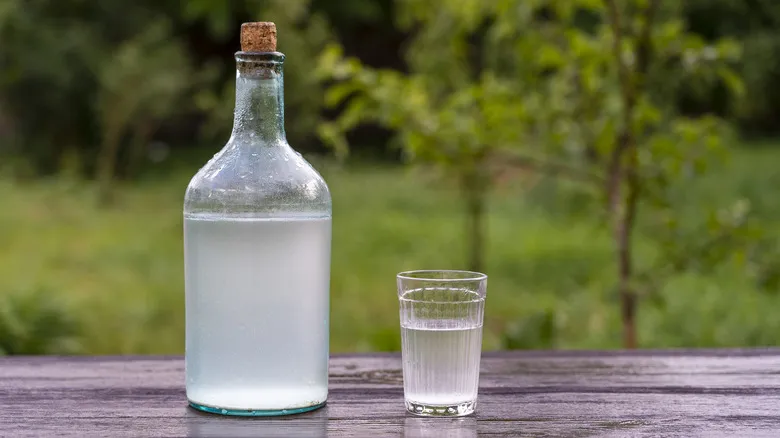What exactly is moonshine?
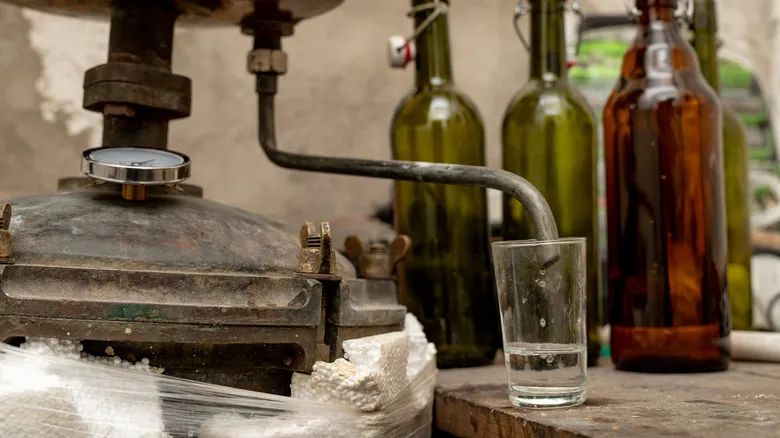
To begin with, we need to clarify what moonshine actually is. It has various nicknames that vary by region. You might know it as white lightning, skullcracker, or bathtub whiskey/gin. Some people even playfully call it "mountain dew," often with a knowing smile (the green soda actually got its name from this spirit). Regardless of the name, they all refer to the same substance: a clear, unaged whiskey primarily made from corn and produced using homemade copper or steel stills. The end result is quite potent, with an alcohol content that can range from 40% to as much as 80% alcohol by volume.
Moonshine has a lot in common with "white dog," which is the legal, clear whiskey that comes straight from the still. The main distinction between the two is their legal standing: white dog is above board, while moonshine is not. As Clay Risen noted in an article for The Atlantic, if the still's owner has never faced arrest by the Bureau of Alcohol, Tobacco, Firearms and Explosives, it's likely they weren't truly producing moonshine!
To make moonshine is to flaunt the law
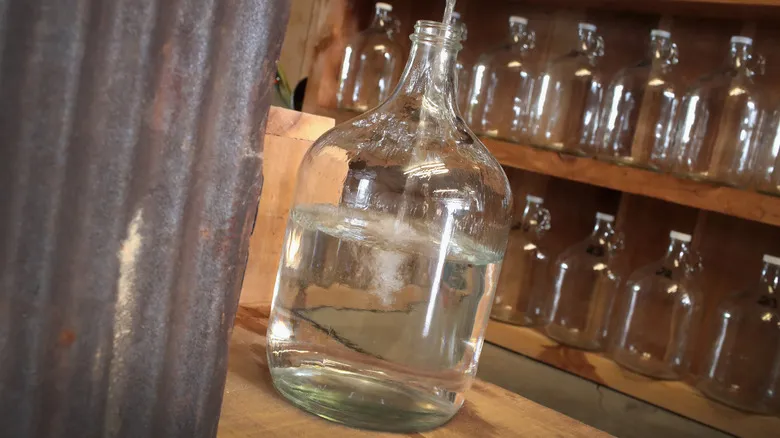
Moonshine has historically had a tumultuous relationship with the law in the United States, though this wasn't always the case. There was a period when whiskey production was not only legal but also widely practiced. In the 17th century, it was common for households to have a still on their front porch, and distilling moonshine was as routine as farming. The situation began to shift when the government imposed taxes on whiskey, particularly with the introduction of the Whiskey Tax in 1791. This tax placed a significant burden on small-scale distillers, who felt it was their "God-given right" to produce their own spirits, leading to the outbreak of the Whiskey Rebellion. Although the government ultimately maintained the tax, the practice of moonshine production went underground during this time. The shift away from legal distillation gave rise to the term "moonshine," as distillers had to operate at night under the cover of moonlight to evade authorities.
Until the era of Prohibition, moonshine remained a small-scale endeavor in the Appalachian region, as urban residents favored wine, rum, rye whiskey, and other spirits. However, when those options became scarce due to government enforcement, people turned to moonshine as their primary source of alcohol. Production surged, with speakeasies and bootleggers distributing "white lightning" across the country, transforming moonshiners into the unsung heroes of a parched nation.
Where does that leave moonshine today?

Producing hard liquor, such as moonshine, in the U.S. without a license is still considered a felony, but enforcement has become significantly more lenient compared to previous decades. During the 1950s to the 1970s, government agents could take severe action against individuals for merely possessing the cap of an unlicensed still. Nowadays, some states, including Alaska, Massachusetts, and Missouri, permit individuals to produce moonshine as long as they promise it’s solely for personal use or consumed on their own property.
The strict enforcement surrounding moonshine production stems from the fact that, contrary to the romanticized image of daring moonshiners and bootleggers from the Prohibition era, making moonshine is often a hazardous endeavor. Many moonshiners sell high-proof alcohol that poses risks of methanol poisoning due to the use of subpar ingredients. In contrast, creating homemade low-proof beverages like beer and wine is legal in all states without a license, provided they are not intended for sale.
As for the trendy "moonshine" bottles available at your local liquor store, they are actually legally produced white whiskey that uses the term as a marketing gimmick. While they may achieve the desired potency and flavor, they cannot be classified as genuine moonshine. If it’s legal, it’s certainly not moonshine.
Recommended
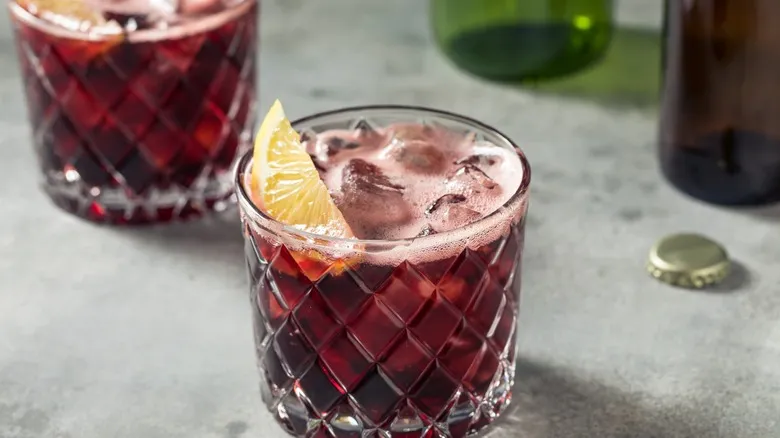
The Best 2-Ingredient Cocktail To Make From Boxed Red Wine
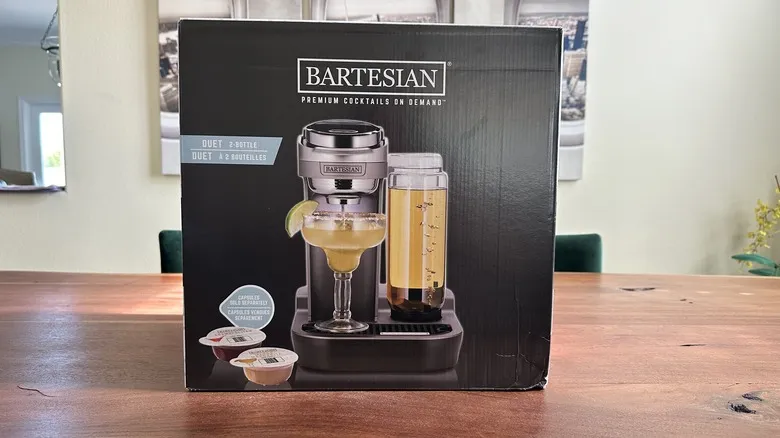
Review: The Bartesian Cocktail Maker Delivers Bar-Worthy Drinks With The Push Of A Button

Turn Your Pickles Into Bloody Mary Shot Glasses And Thank Us Later

The Best Bourbon For A Juicy, Bright Paper Plane Cocktail
Next up

